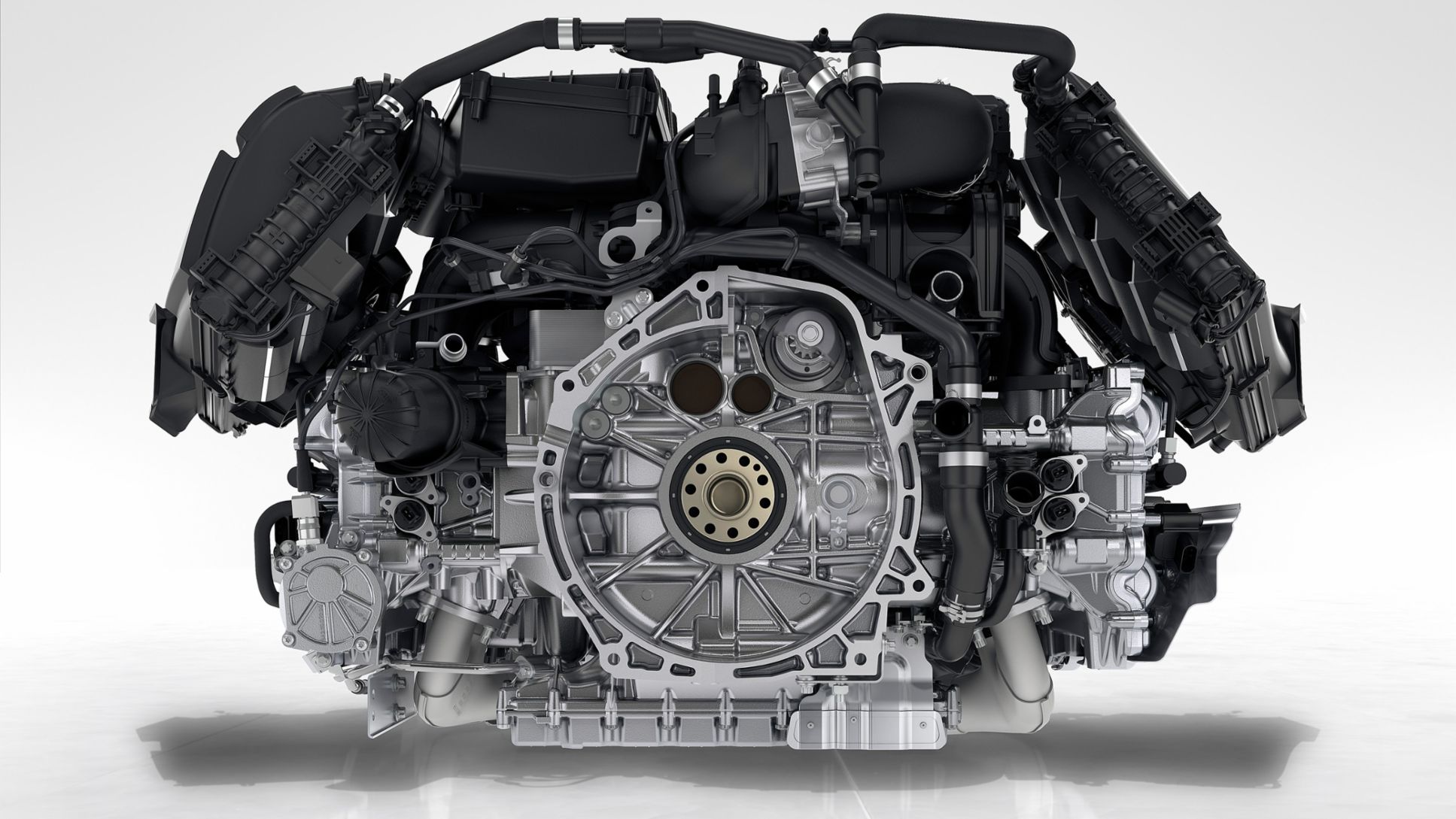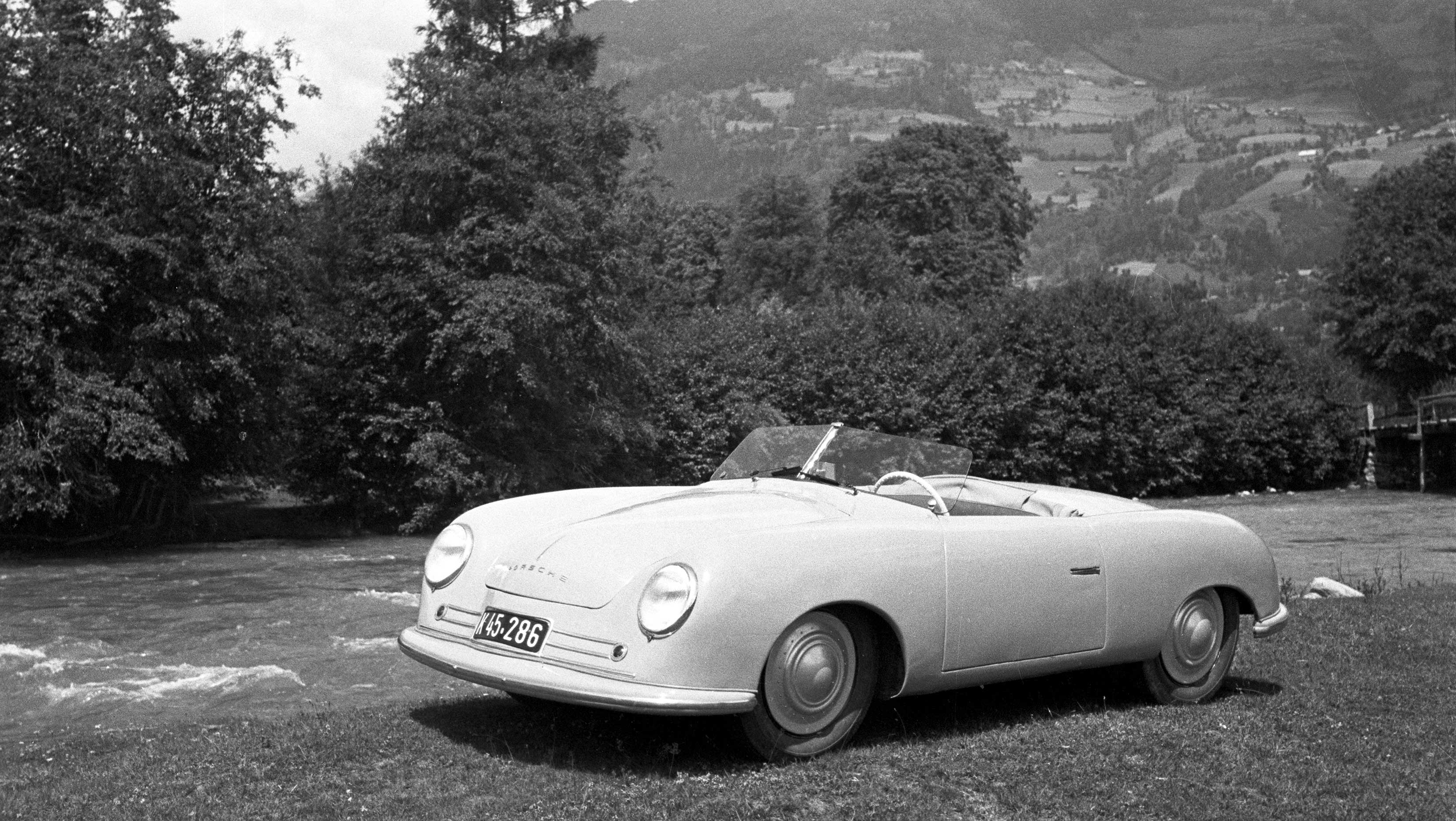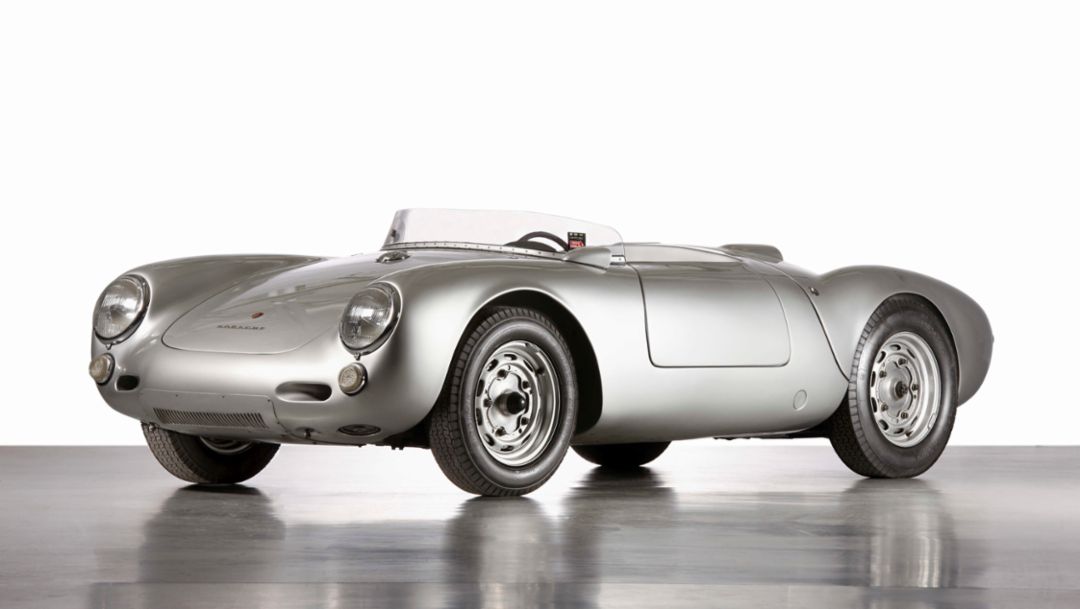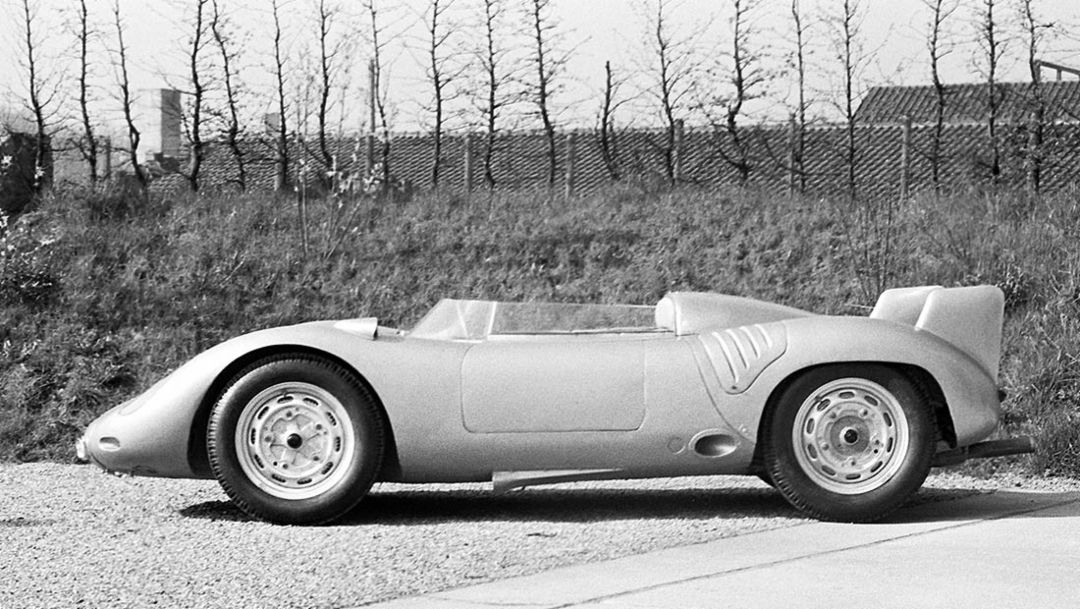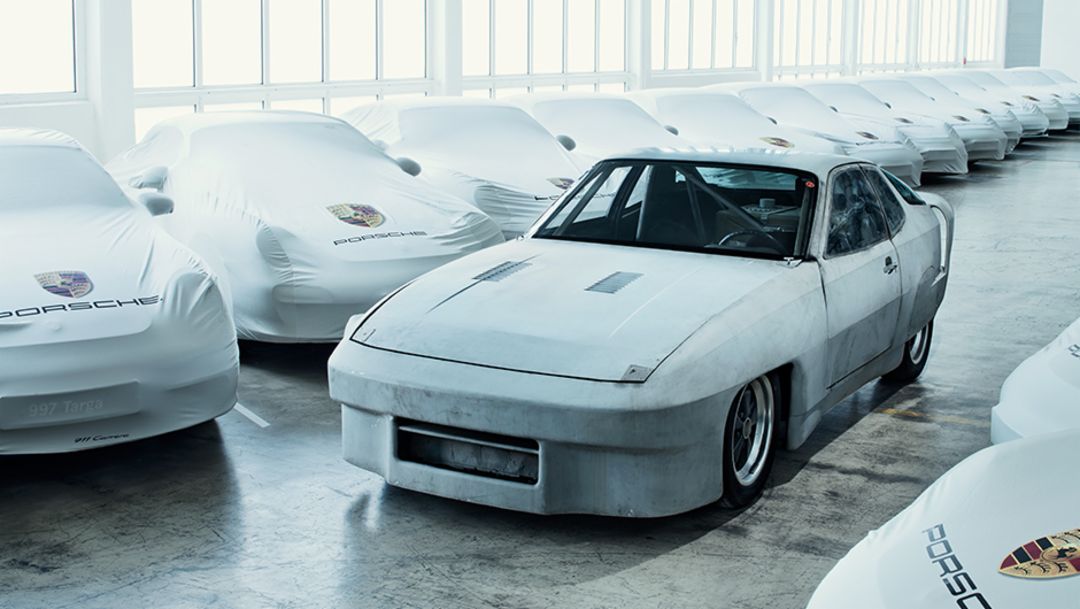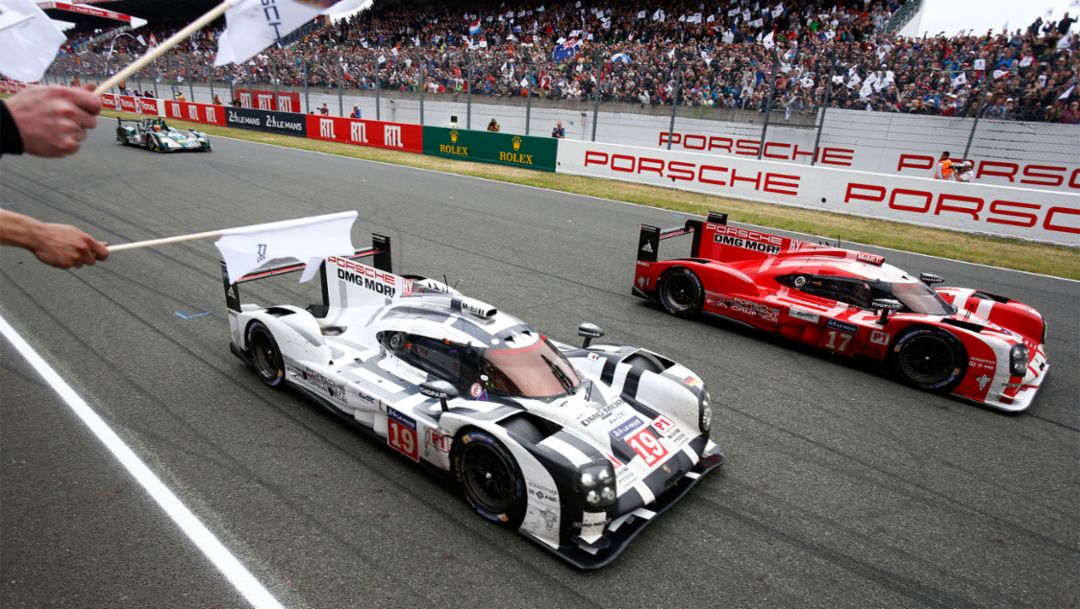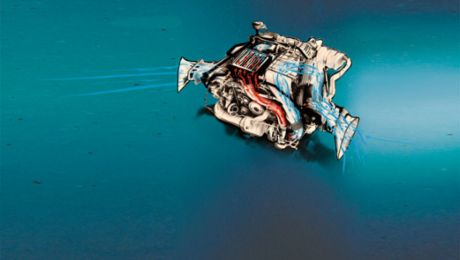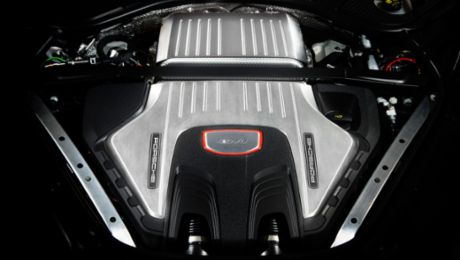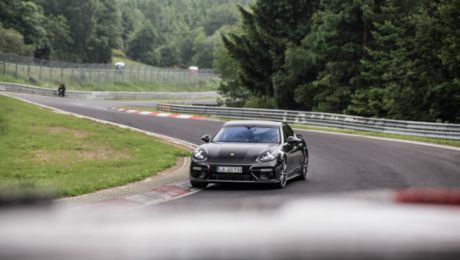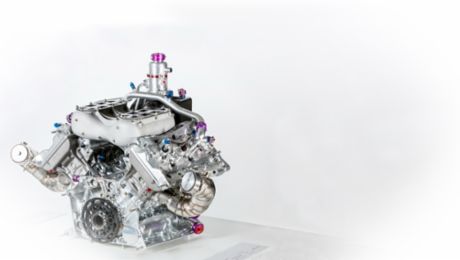1948: Porsche 356
In July 1948, a murmur makes its way through the village of Gmünd in Kärnten. A vehicle drives through the idyllic town in the Alps – a car unlike any other the world had ever seen: stylish and dynamic, sporty, infinitely elegant. The Porsche 356 glistens in the Austrian summer sunshine: the first vehicle with the official brand name "Porsche". Previously, the automotive design office of Ferdinand Porsche had developed all of its vehicles in the name of other manufacturers.
The first Porsche had a four-cylinder engine – and it won over car fans, not only by its charming appearance, but also by its fast-paced character. The very first 356 prototype – production number 1 – raced a fast demonstration lap at the city street race in Innsbruck. Back then it still had a mid-engine; later in production, it was replaced by a rear-mounted engine. The engine in the 356 is an old acquaintance. It is based on the Volkswagen flat engine that was developed by the Porsche design office in the 1930s. After Innsbruck, it could no longer be held back. There is hardly a classic race the car has not won: the 24 Hours of Le Mans, the 1000 Kilometres of Buenos Aires, the Mille Miglia, Targa Florio, Carrera Panamericana. The Porsche 356 was always out at the front.
1953: Porsche 550 Spyder
In 1952, Porsche KG decided to become involved in manufacturer's racing. The Porsche race car was to be compact, powerful and fast. And above all lightweight to ideally utilise the engine's power. Engineers went to work – and created the 550 Spyder. Mid-engine construction, ultralight aluminium body, 550 kg unladen weight. And a four-cylinder flat engine that made itself heard quite loudly. Named the Fuhrmann engine after its designer, the engine developed a respectable 110 hp thanks to four camshafts. That was 60 hp more than the first 356 engine just five years prior. It catapulted the Spyder to high speeds of up to 220 km/h.
Its performance at the Targa Florio in 1956 was legendary. At this tradition-rich endurance race in Sicily, Umberto Maglioli and Huschke von Hanstein went to the start in a Porsche 550 A. And they finished victorious – with a full 15 minute lead over even the six- and eight-cylinder competition.
1957: Porsche 718
Once again, race engineers accomplished a tremendous task. Despite the visual similarities to its predecessor, the 550 Spyder, the performance data of the Porsche 718 RSK spoke a unique language. At first, 148 hp, and in the 718 RS60 with 1.6 litres of displacement an impressive 160 hp, were teased from the four-cylinder engine. With an unladen weight of just 530 kg, the 718 also trimmed some significant weight compared to the 550 A Spyder that weighed 550 kg. The mid-engine sports car could now sweep over the asphalt at a maximum speed of 260 km/h.
Thanks to this increase in performance, the Porsche 718 even surpassed the success of its predecessor. At the Targa Florio, the 718 was overall victor in 1959 and 1960; it raced to a class victory in 1958 and 1961, and it was the uninterrupted European Hill Climb Champion from 1958 to 1961. The 718 was also modified into a single-seater and competed in Formula-2 and Formula-1 racing.
1963: Porsche 904 Carrera GTS
An innovation at Porsche: the steel box frame of the Carrera GTS is joined to a body made of polymer. The glass fibre reinforced polyester resin developed by BASF gives the car body an elementary advantage: lightness. And it made genuine racers out of the stylistically confident rockets designed by Ferdinand Alexander Porsche with their characteristic design. Not only in motorsport competitions, but also in the hands of individual customers. Demand for the elegant mid-engine sports car was so high that in addition to the 100 units needed for homologation an additional 16 Carrera GTS cars were built.
In 1964, the Carrera GTS achieved a prestigious victory. After 720 high-paced kilometres over dusty streets and through tight bends, after seven hours and ten minutes of wild driving along the coast of Northern Sicily, Antonio Pucci and Colin Davis charged across the finish line in first place at the Targa Florio. Once again, the Fuhrmann engine, Porsche's proven four-cylinder flat engine put on a display for its class.
1976: Porsche 924
To introduce its new model, Porsche planned a high-speed drive. It optimised a Porsche 924 to set an endurance speed record. The goal was to drive the car a distance of 10,000 miles at an average speed of over 250 km/h. The engineers soup up the standard turbocharged four-cylinder engine to 250 hp, and the aerodynamics of the 924 are further perfected in the wind tunnel. This boosts the top speed of the endurance sports car to 280 km/h. However, the record attempt would never take place – shortly before the drive planned in July 1977 the project was stopped for strategic reasons.
As a topical response to the oil crisis of the early 1970s, it was decided that the production 924 would be equipped with an efficient four-cylinder in-line engine. For the first time, Porsche also employed a water-cooled front engine in combination with a transaxle gearbox at the rear axle. In the base version, the compact sports car had a power output of 125 hp, and the S versions up to 160 hp. The turbocharged engine of the 924 Carrera GT even reaches 210 hp and a top speed of 240 km/h.
In successor models to the 924, the 944 and 968, the designers remained true to the combination of an in-line four-cylinder engine and the transaxle concept. The 944 became one of the most successful sports cars of its time – and it saved Porsche AG through the economically turbulent 1980s.
1981: Porsche 944
In one of the successor models to the 924, the 944, the designers remained true to the combination of an in-line four-cylinder engine and the transaxle concept. In 1981, it closed the gap between the entry-level 924 model and the 911 SC. With 163 hp and a list price of 38,900 DM, the 944 was positioned precisely between the two models. The centrepiece of the 944 was its newly engineered naturally-aspirated engine with 2.5 litres of displacement. The in-line four-cylinder engine is based on the right cylinder bank of the eight-cylinder engine of the Porsche 928. Thanks to the use of two Lanchester balancer shafts, the 944 engine was smoother running than many six-cylinder engines. Its digital engine electronics and L-Jetronic fuel injection also pointed the way to the future.
2014: Porsche 919 Hybrid
In the FIA World Endurance Championship (WEC), new efficiency rules have been in force since 2014. They are strict – necessitating a sort of deep pass for the ambitious race car engineers in Weissach. It is a tremendous challenge that promises – along with fame and glory on the race course – genuine benefits for future production car technologies at Porsche.
For Porsche, this was a convincing argument for re-entering competition in the premiere class of racing in the 2014 WEC season after 16 years of abstinence. The candidate: the Porsche 919 Hybrid. Its revolutionary drive concept combined an extremely compact, highly turbocharged 2-litre four-cylinder engine with a powerful electric motor on the front axle. Two energy recovery systems and highly advanced lightweight carbon construction provided for maximum efficiency.
The ultimate stress test for the 919 Hybrid: Le Mans. At the legendary 24-hour race, the two prototypes had a strong race in 2014. Toward the end of the competition, however, they had to bow out due to technical problems.
In the months that followed, the motorsport department in Weissach had a singular purpose: produce the perfect 919 Hybrid for the 2015 season. Even more power, better reliability, higher performance. The rocket was optimised in nearly all of its details – and in the end it achieved its long-awaited first and second place victory at Le Mans.
Consumption data
718 Cayman: Combined fuel consumption 7.4 – 6.9 l/100 km; CO2 emissions 168 - 158 g/km
718 Cayman S: Combined fuel consumption 8.1 – 7.3 l/100 km; CO2 emissions 184 - 167 g/km
